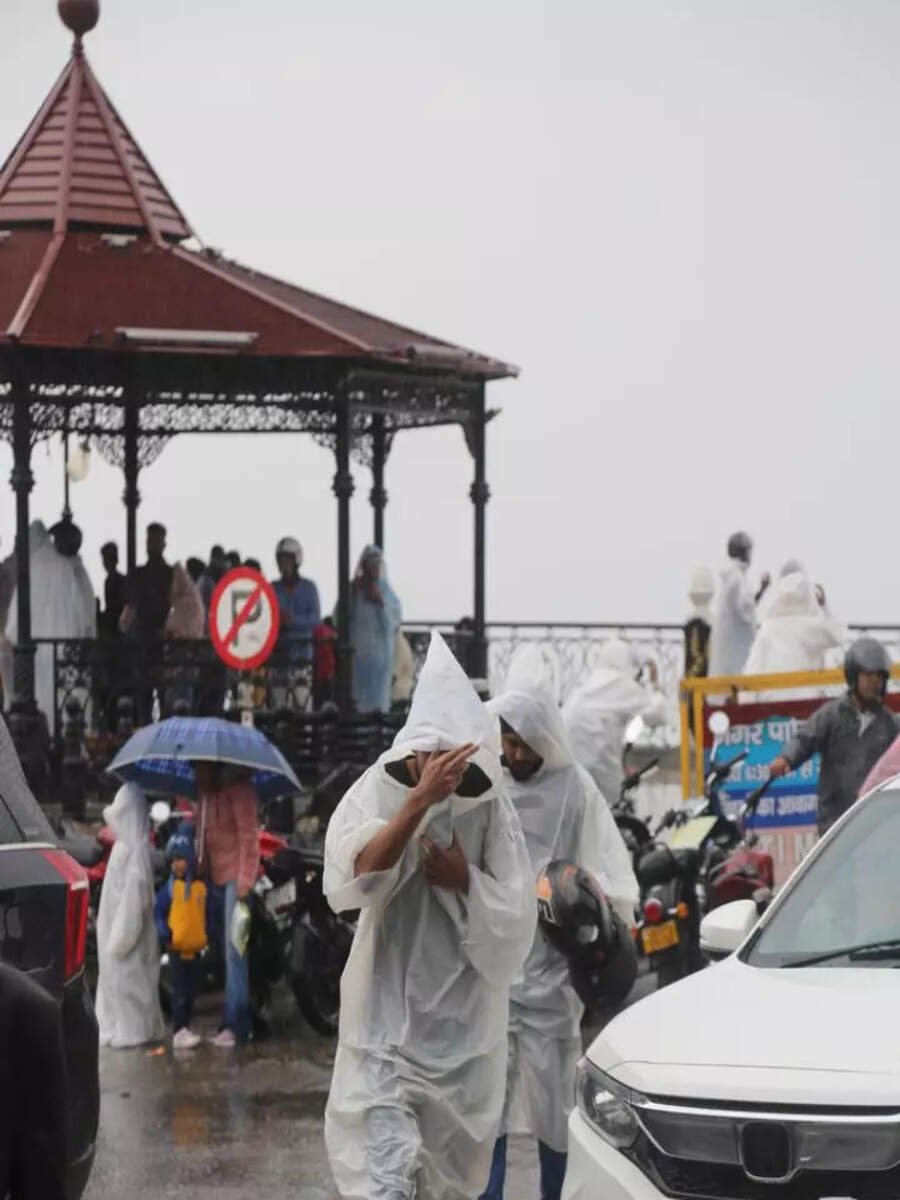Travel Guides & Articles
India Poised for Hospitality Growth as Wyndham Announces Plans to Add 50+ Hotels, Introducing New Brands and Strengthening Tourism Infrastructure Nationwide

Sunday, July 13, 2025
Wyndham Hotels and Resorts, the world’s largest hotel franchisor, has unveiled plans to significantly expand its footprint in India. The company intends to add over 50 new hotels in the country as part of its ambitious growth strategy, aiming to cater to the ever-growing demand for quality hospitality services in one of the world’s fastest-growing economies. Currently, Ramada, one of Wyndham’s premier brands, is the company’s most popular hotel brand in India. However, as part of this strategic expansion, Wyndham is planning to introduce a variety of other brands into the Indian market.
Wyndham’s Current Presence in India
As of 2025, Wyndham has successfully established over 70 hotels across India, marking a strong presence in the Indian hospitality sector. According to Rahool Macarius, the Market Managing Director for Eurasia at Wyndham, the company is poised to increase this number significantly in the near future. “Very soon, we are going to be more than 100,” Macarius said in a recent interview with PTI. He also mentioned that Wyndham has more than 50 hotels already in its development pipeline, which is growing consistently.
Brand Diversification and New Introductions
As Wyndham continues its expansion in India, the company has expressed its intent to diversify its brand portfolio to cater to a variety of market segments. Currently, Ramada remains the flagship brand in India, but Dimitris Manikis, Wyndham’s President for Europe, Middle East, Eurasia, and Africa, has promised that more brands will soon join the Indian market.
“We’ve got such a great portfolio of brands that they fit with certain markets at a certain time,” said Manikis. The company already boasts 25 hotel brands under its umbrella, including well-known names such as Super 8, Days Inn, Microtel, Baymont, Wingate, Trademark Collection, and Wyndham, each targeting different types of travelers and offering varying levels of accommodation.
This brand diversification strategy is expected to increase Wyndham’s appeal in India, allowing it to cater to a wide spectrum of guests—from budget-conscious travelers to those seeking luxury and premium experiences.
Wyndham’s Growing Global Footprint
Wyndham is a global leader in the hotel industry, with a portfolio that spans over 9,300 hotels in nearly 95 countries. The company’s strategy for growth is not just limited to India but aims to broaden its reach in markets across the globe. As part of its expansion efforts, Wyndham recently formed a strategic partnership with Cygnett Hotels & Resorts to introduce two of its globally recognized brands—La Quinta by Wyndham and Registry Collection Hotels—into the Indian market. This partnership is a pivotal move in Wyndham’s larger strategy to further expand its presence in the Indian hospitality industry.
The addition of La Quinta by Wyndham and Registry Collection Hotels to Wyndham’s portfolio is expected to bring world-class luxury and premium hotel options to Indian cities, further strengthening the country’s position as a leading global tourism destination.
India’s Tourism Potential
While discussing Wyndham’s growth plans for India, Manikis emphasized the vast tourism potential of the country. He highlighted that India’s rich culture, heritage, and diverse landscapes make it a highly attractive destination for international tourists. However, to fully capitalize on this potential, there needs to be greater marketing efforts to showcase India as a top-tier destination on the global tourism map.
He also underscored the importance of making travel to India as seamless as possible. “Direct flights, absolutely critical… make entry into the country as easy as possible,” said Manikis, referring to the need for more direct international flights to major cities in India. Streamlining visa processes for foreign visitors is another aspect that could help boost India’s global tourism standing.
India is already one of the world’s fastest-growing economies and is seeing increasing interest from international tourists. By improving infrastructure, promoting tourism more effectively, and easing travel barriers, India has the potential to become one of the world’s top tourism destinations in the coming decades.
Boosting India’s Position on the Global Tourism Map
With India’s increasing appeal among international travelers, the country’s tourism industry is set for exponential growth. Wyndham’s move to expand its operations and introduce new brands further supports India’s growing reputation as a top international destination. The hospitality sector will play a crucial role in this growth, providing the accommodation options necessary to support the increasing number of visitors.
Wyndham’s expansion is aligned with the broader trends of growth in the Indian hospitality industry. As the country continues to develop its tourism infrastructure and enhance its global appeal, international hotel chains like Wyndham are investing heavily to secure a presence in the market. The growing number of foreign tourists and the demand for quality accommodations are providing significant opportunities for both domestic and international hotel brands to thrive in India.
The Role of Wyndham’s Global Brands in India’s Hospitality Market
Wyndham’s diverse portfolio of hotel brands will bring much-needed variety to India’s hospitality industry. From luxury resorts to budget-friendly options, Wyndham’s brands cater to a wide array of travelers, both domestic and international. The company’s strong brand recognition will allow it to capture significant market share, particularly in major Indian cities and tourist hotspots such as New Delhi, Mumbai, Bangalore, Chennai, and Goa.
In addition to its established brands like Ramada, Wyndham will introduce other options to meet the growing demand for mid-range and luxury accommodations. The introduction of La Quinta by Wyndham and Registry Collection Hotels will cater to travelers looking for more premium offerings, which is particularly relevant as India sees an influx of affluent international visitors.
The Future of India’s Hospitality and Tourism Industry
The future of India’s hospitality and tourism sector looks bright, driven by several factors such as economic growth, improved connectivity, and the increasing number of international travelers. As India continues to enhance its infrastructure and services, there is an increasing focus on sustainability and eco-tourism, which will likely attract a new generation of travelers who prioritize environmentally friendly experiences.
Hotel chains like Wyndham are investing in sustainable tourism practices and offering eco-friendly options to meet the growing demand for environmentally conscious travel. The adoption of green building standards, eco-friendly amenities, and energy-efficient technologies will be key to attracting tourists who seek responsible travel experiences.
The Indian government’s focus on tourism as a pillar of economic development is also encouraging international brands like Wyndham to expand their operations in the country. With initiatives such as the National Tourism Policy and various government-led programs to boost tourism infrastructure, India is well on its way to becoming a global leader in the hospitality and tourism sector.
Conclusion
Wyndham Hotels and Resorts’ ambitious plan to add 50+ hotels in India is a significant step towards further establishing the country as a major player in the global tourism industry. With over 70 hotels already in operation, Wyndham is positioning itself as a leader in India’s hospitality market, offering a diverse range of accommodations that cater to both budget-conscious travelers and those seeking luxury experiences.
The expansion of Wyndham’s brand portfolio in India, including the introduction of global brands such as La Quinta by Wyndham and Registry Collection Hotels, will help meet the growing demand for high-quality hotel options in the country. As India continues to enhance its tourism infrastructure and promote itself as a premier destination, Wyndham’s investment is a clear signal of the potential for continued growth and success in India’s hospitality industry.
With India’s tourism sector poised for exponential growth, Wyndham’s expansion efforts will help position the country as a leading global tourism destination, offering a wide range of options for international travelers and contributing to the country’s economic diversification.
Travel Guides & Articles
Flood and Rain Alert in India: Places you should avoid travelling right now!

Mumbai
Mumbai, every year faces challenges during the monsoons. And this year too, the state is experiencing heavy rainfalls, causing waterlogging, traffic, and travel delays. The IMD forecasts continued heavy spells over the next few days so it is suggested to avoid travel through flooded regions.
Travel Guides & Articles
Agoda Reports 68% Growth in Travel Interest from India to Japan

New Delhi – Indian travelers are showing increasing interest in Japan, with Agoda data revealing a 68% year-on-year increase in searches between 15 May and 15 August 2025, compared to the same period last year.
Among the most searched destinations, Tokyo, Osaka, and Kyoto lead the list, recording growth of 59%, 158%, and 53% year-on-year respectively. Osaka stood out with the highest uptick in travel interest, underlining its rising popularity for city experiences and proximity to attractions such as Universal Studios Japan and Nara deer park.
Beyond the top three, Agoda’s data revealed rising interest from Indian travelers in Japanese destinations including Fujikawaguchiko (+36%) and Sapporo (+18%) in the top five, followed by Hakone (+46%), Okinawa (+47%), Fukuoka (+14%), Yokohama (+20) and Nagoya (+41%) rounding out the top ten. Notably, Nagoya entered the top ten for the first time this year, replacing Narita.
Agoda’s latest data reveals that Indian travelers are showing growing interest in a wider variety of Japanese destinations. In addition to traditional urban favorites, many of the top choices, such as Fujikawaguchiko, Hakone, and Sapporo, are celebrated for their scenic landscapes and leisure experiences, indicating a growing preference for nature and relaxation. Others, like Okinawa and Fukuoka, offer unique cultural and coastal experiences. This trend highlights a shift toward discovering a broader variety of Japan’s diverse regions, from mountain retreats to vibrant cities and coastal escapes.
Gaurav Malik, Country Director, Indian Subcontinent & Indian Ocean Islands, said, “Japan’s mix of modern cities, cultural heritage, and natural beauty is striking a chord with Indian travelers like never before. What we are seeing is that travelers are not only choosing traditional hotspots like Tokyo but are also exploring beyond, with Osaka and other cities quickly gaining popularity. Families can enjoy theme parks and kid-friendly attractions, couples can chase romantic escapes in Kyoto and Hakone, while groups of friends can opt for leisure getaways in places like Okinawa. At Agoda, we’re making it easier to plan these journeys end-to-end, with convenient choices for flights, stays, and curated experiences across Japan.”
The demand also reflects broader travel trends, with greater flight connectivity, simplified visa processes, and rising interest in experiential travel driving demand. From city discovery in Tokyo to cultural immersion in Kyoto, relaxing hot springs in Hakone, and scenic escapes around Mount Fuji, Japan is firmly establishing itself as a must-visit destination for Indian travelers planning both short breaks and longer holidays.
Travel Guides & Articles
Ganesh Chaturthi Special: Meet Parbati Barua, The Assam Royal Who Broke Barriers As India’s First Lady Mahout And Is Called ‘Daughter Of Elephants’ | Travel

Ganesh Chaturthi Special: Meet Parbati Barua, The Assam Royal Who Broke Barriers As India’s First Lady Mahout And Is Called ‘Daughter Of Elephants’. Credit: Facebook
As India prepares for Ganesh Chaturthi 2025, welcoming Lord Ganesha, who is revered as the remover of obstacles and the symbol of wisdom, there is perhaps no better time to reflect on the extraordinary life of a woman whose work embodies the spirit of the festival. She is Parbati Barua, India’s first female mahout, widely known as the Hasti Kanya or “Daughter of Elephants.”
For more than five decades, Parbati Barua has devoted her life to taming, caring for, and conserving elephants—breaking through the gender stereotypes of a field historically reserved for men. Her journey is not only a story of courage, but also an example of India’s deep cultural and spiritual reverence for elephants as well as indigenous knowledge.
A Wild Calling
Born on March 14, 1953, into the royal family of Gauripur in Assam, Parbati was the daughter of Late Prakritish Chandra Barua, the last ruler of Gauripur, who was both a hunter and an elephant expert with nearly 40 elephants in his royal stables. While her lineage and education—she graduated in Political Science from Gauhati University—might have suggested a path in academia or public life, her destiny lay elsewhere.
At just 14 years old, Parbati domesticated her first elephant in the Kochugaon forest of Assam. From 1975 to 1978, she successfully tamed 14 wild elephants using the traditional Assamese technique of Mela Shikar, where elephants are captured with a lasso rather than tranquilizers. Over the course of her career, she has trained more than 500 elephants.
Of Conservation & Care
Parbati Barua’s contributions extend far beyond taming. She has worked alongside forest departments in Assam, West Bengal, Kerala, Uttarakhand, and Uttar Pradesh, offering her expertise in training mahouts, resolving human-elephant conflicts, and treating injured or ailing elephants with herbal remedies. In an interview with the New Indian Express, when asked whether elephants are better than human beings, she promptly said, “Hundred per cent. Human beings can be cruel. Also, like humans, each elephant has a unique personality. There are introverted and extroverted elephants. There are leaders and followers. Some are very social. Most are benevolent and kind-hearted, and have enormous patience. Only when they reach the limit of their patience do they get angry. They love children, and will never harm them.”
Her skills have been sought not just in India but internationally. She has represented India at global conferences on elephants, from Bangkok in 2001 to workshops in Tamil Nadu, Jaldapara, and North Bengal, and contributed research on the status of Asiatic elephants. She also served as a member of the Asian Elephant Specialist Group of the International Union for Conservation of Nature (IUCN).
A Lifetime Of Recognition
For her tireless work, Parbati Barua has been honoured with numerous awards:
- Global 500 Roll of Honour (1989) from the United Nations Environment Program (UNEP).
- Honorary Chief Elephant Warden of Assam (2003), conferred by the Assam government.
- Asom Gaurav Award (2023), Assam’s highest civilian honour.
- Lifetime Achievement recognitions from wildlife and conservation groups, including Nature’s Warrior Jury Award (2023).
In 2024, Parbati was also honoured with a Padma Shri for her contributions to the welfare of elephants and the indelible mark she left on India’s conservation story.
Travel News – Find latest news and tips based on Indian and World travel including top 10 travel destination, tourism information, how to reach visit and more at Times Now.
-

 Business4 days ago
Business4 days agoThe Guardian view on Trump and the Fed: independence is no substitute for accountability | Editorial
-
Tools & Platforms3 weeks ago
Building Trust in Military AI Starts with Opening the Black Box – War on the Rocks
-

 Ethics & Policy1 month ago
Ethics & Policy1 month agoSDAIA Supports Saudi Arabia’s Leadership in Shaping Global AI Ethics, Policy, and Research – وكالة الأنباء السعودية
-

 Events & Conferences3 months ago
Events & Conferences3 months agoJourney to 1000 models: Scaling Instagram’s recommendation system
-

 Jobs & Careers2 months ago
Jobs & Careers2 months agoMumbai-based Perplexity Alternative Has 60k+ Users Without Funding
-

 Funding & Business2 months ago
Funding & Business2 months agoKayak and Expedia race to build AI travel agents that turn social posts into itineraries
-

 Education2 months ago
Education2 months agoVEX Robotics launches AI-powered classroom robotics system
-

 Podcasts & Talks2 months ago
Podcasts & Talks2 months agoHappy 4th of July! 🎆 Made with Veo 3 in Gemini
-

 Education2 months ago
Education2 months agoAERDF highlights the latest PreK-12 discoveries and inventions
-

 Podcasts & Talks2 months ago
Podcasts & Talks2 months agoOpenAI 🤝 @teamganassi





















